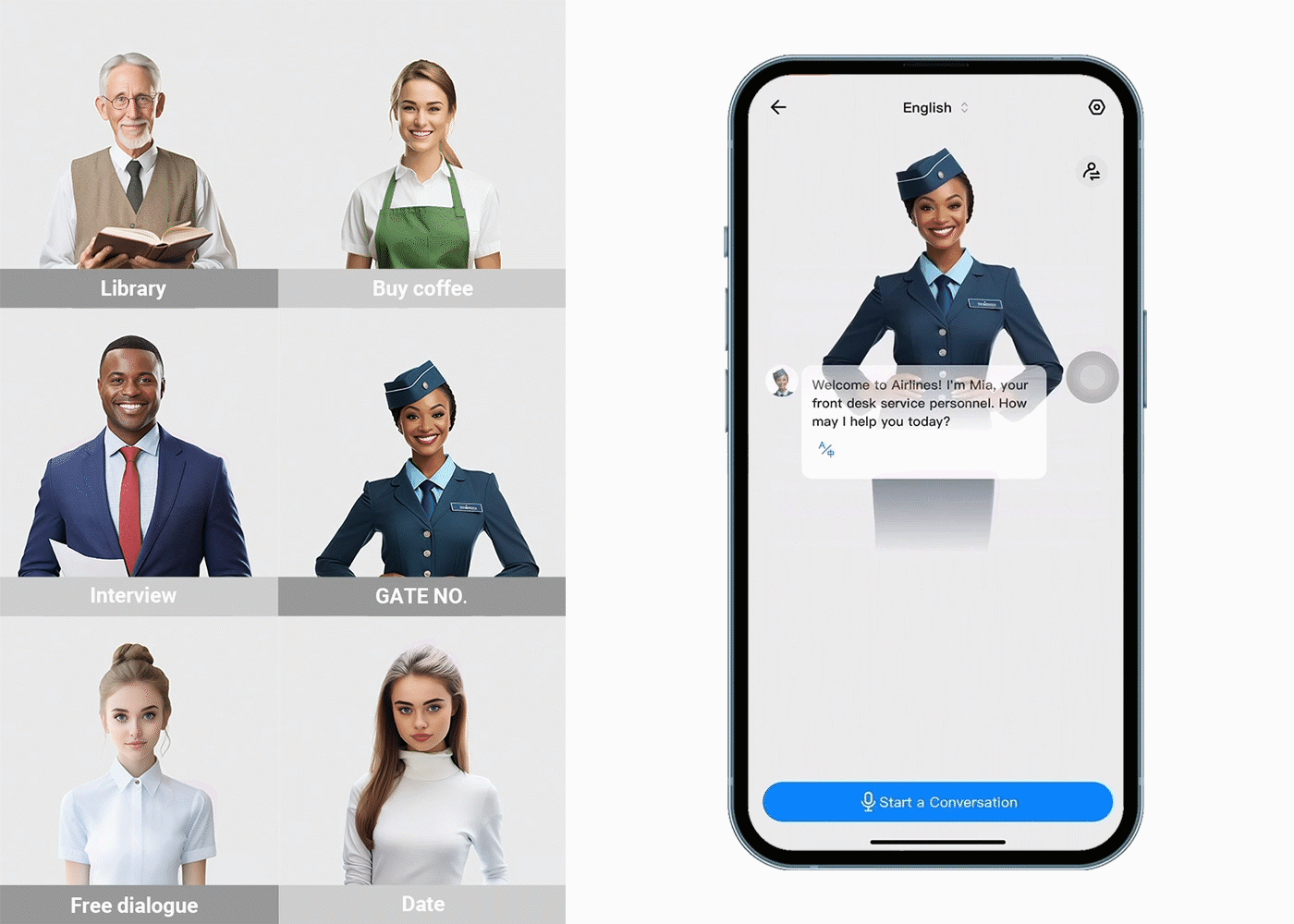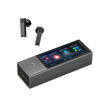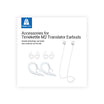What is Machine Translation?
Machine translation (MT) is a technology that uses computer software to automatically translate text or speech from one language to another. It works by analyzing the words and grammar of the source language and then producing the most likely translation in the target language.
The Past, Present and Future of Machine Translation
Machine translation has come a long way. First it was all about rule-based systems—these used dictionaries and grammar rules to convert one language into another. They worked to a certain extent but struggled with context and sounded awkward.
Then came a big step forward: statistical machine translation (SMT). This method used huge collections of human translated texts to find patterns and make predictions about how to translate phrases. It was more flexible than rule-based systems but still struggled with complex language and idioms.
The biggest breakthrough so far has been neural networks. These are powered by artificial intelligence that mimic how the human brain. NMT learns from massive amounts of data and can understand meaning, tone and context—resulting in translations that sound like this. It’s a conversational tone.
Recently the use of large language models have become more common, we have seen the rise of direct addresses to the reader. We have seen the use of large language models like Google, OpenAI or DeepMind have made translation even more powerful. These models are trained on huge amounts of text and can produce highly accurate, fluent translations even for tricky or creative content.
Looking ahead real-time translation is becoming more common. Thanks to faster and smarter AI, devices and apps can now translate speech or text as it’s happening. This could open up amazing possibilities for classrooms, international meetings, travel and more—helping people communicate seamlessly across languages. Tools like Timekettle translation earbuds which allow users to have real-time conversations with other people. We can engage in real-time multilingual conversations hands-free, making it feel like you’re speaking the language.
In the future, we might also see multimodal translation that goes beyond just words—using voice, images, or even gestures to better capture the full meaning of what someone is trying to say.
Of course, there are still challenges, like making sure these systems are fair, unbiased, and respect privacy. But with thoughtful development, machine translation will continue to grow as a powerful tool that brings people and cultures closer together.
Benefits of Using Machine Translation Software



Machine translation software possesses several powerful advantages that make it a worth-while investment for businesses, organizations, and individuals operating in today's globalized environment. Some of the key advantages are:
Greater Speed and Translation Volume
Perhaps the biggest benefit of machine translation is that it is able to translate vast amounts of content within a short timeframe. Human translators have a limited amount that they can translate within a given period of time, but machine translation software is able to process enormous amounts of text at incredibly high speeds. This increased efficiency is particularly useful for businesses that need to localize vast quantities of content, such as websites, product guides, or marketing materials, into multiple languages.
Enhanced Accessibility to Multiple Languages
Machine translation has given a simple means than ever to bridge language gaps and communicate with people of other languages. By rapid word conversion into various languages, it has opened more avenues for intra-global cooperation, knowledge sharing, and cross-culture communication. Businesses can market to larger global audience segments, while individuals can gain knowledge and get information from other regions of the world regardless of the originating language.
Lower Translation Costs
In contrast to human translation services, which are usually expensive, machine translation provides a cost-effective solution, especially for huge projects or repeated translation needs. Even though paying for machine translation software outright is expensive, long-term savings in terms of lower costs are enormous in light of the fact that per-word or per-page cost is much lower compared to manual translation. This cost-effectiveness makes machine translation a feasible option for organizations with limited translation budgets or organizations that wish to maximize their localization efforts and minimize expenses.
In general, the benefits of machine translation software, including productivity and quantity increases, increased language access, and cost savings, have made machine translation a worthwhile tool for businesses, organizations, and individuals who wish to communicate effectively across linguistic borders.
Top 5 Machine Translation Tools
In today's globalized world, inter-language communication is more important than ever. With machine translation (MT) software, corporations, organizations, and individuals now have at their disposal the ability to quickly and efficiently translate material from one language into another. Here, we'll present five of the top machine translation tools available today.
Amazon Translate
Amazon Translate is a neural machine translation service offered by Amazon Web Services (AWS). It uses advanced deep learning models to deliver fast, high-quality translations between dozens of languages. Some key features of Amazon Translate include:
Overview of Features
- Supports over 75 languages including common and less-common languages
- Ability to customize translation models with domain-specific terminology
- Batch translation for large volumes of text
- Real-time translation for websites, applications, and streaming conversations
- Automatic language detection
Strengths
- Part of the comprehensive AWS ecosystem, easy integration with other AWS services
- Highly scalable and cost-effective for large translation volumes
- Advanced neural machine translation models keep improving over time
- Secure translation environment with data encryption
Ideal Use Cases
- Enterprises with large translation needs across multiple languages
- Localization of websites, software, games, and multimedia content
- Real-time translation for customer support, chat conversations
- Back-office operations involving translation of documents, emails, etc.
Pricing
Amazon Translate uses a pay as you go pricing model based on the number of characters translated. The first 2 million characters per month are free, after that it’s $15 per million characters for standard models. Custom models are more expensive.
DeepL Translator
DeepL Translator is a powerful machine translation tool that uses the latest neural network technology to deliver very accurate and natural translations. One of its strengths is that it can handle nuance and preserve the context and tone of the original text, making it perfect for translating creative content like marketing copy, website copy and even books.
Overview of Features
- Supports over 26 languages, including major European languages, Chinese, Japanese, and Russian
- Contextual understanding of language, preserving meaning and tone
- Customizable translation memories and glossaries for consistent terminology
- Integration with popular software and platforms like Microsoft Office, Google Docs, and web browsers
Strengths
- Exceptional translation quality, often rivaling human translators
- Ability to handle complex sentence structures and idioms
- Strong performance in maintaining context and style across different content types
- User-friendly interface and easy integration options
Ideal Use Cases
- Translating marketing and advertising materials
- Localizing websites and software applications
- Translating creative works like novels, scripts, and poetry
- Handling technical documentation and manuals
Pricing
DeepL Translator offers a free version with limited character limits and a paid subscription plan with more features and higher character limits. The paid plan starts at $20 per month for individuals and scales up for businesses based on their translation volume.
CrossLang
CrossLang is a cloud-based machine translation platform with a user-friendly interface and many customization options. One of its best features is that you can train the translation engine with your own data, such as glossaries, style guides and translation memories so the output is tailored to your terminology and style.
Overview of Features
- Customizable translation engines
- Support for over 100 languages
- Integrations with various content management systems and file formats
- Real-time collaborative editing and translation
- Glossary and translation memory management
Strengths
- Highly customizable for specific industries or domains
- Robust security and data privacy measures
- Scalable for large-scale translation projects
- User-friendly interface and workflow
Ideal Use Cases
- Enterprises with specialized terminology or industry-specific language
- Translation agencies or language service providers
- Content creation and localization for technical documentation or manuals
- Collaborative translation projects with multiple stakeholders
Pricing
CrossLang has flexible pricing plans based on the number of words or characters translated. There is a free plan for small projects and custom enterprise plans for bigger companies. Pricing is competitive compared to other machine translation tools out there.
Google Translate
Google Translate is one of the most popular and well-known machine translation tool. It supports over 100 languages and can translate text, documents, websites, speech and even handwriting. One of the strengths of Google Translate is that it can give you quick and reasonable translations for many languages and content types.
Features and Strengths
- Supports over 100 languages for text translation
- Can translate entire documents and websites
- Offers speech and handwriting translation
- Integrates with other Google products like Gmail and Google Docs
- Available as a website, mobile app, and browser extension
- Frequently updated language models and neural machine translation
Ideal Use Cases
Google Translate is best for quick translations of general, informal content like emails, social media posts, websites or short documents. It can be a helpful tool to get the gist of content in a foreign language or to communicate basic information across languages. But it’s not ideal for sensitive, legal, medical or highly technical content that requires precise translation.
Pricing
Google Translate is free for personal use with some limitations on document size and frequency. For businesses and higher volumes, Google offers paid plans through the Google Cloud Translation API with customizable models, batch translation, and support.
Microsoft Translator
Microsoft Translator is a machine translation service by Microsoft. It supports translating text between more than 60 languages and can be integrated into many applications and workflows.
Features
- Text translation: Translate text snippets or documents between supported languages.
- Speech translation: Translate spoken audio from one language to another in real-time.
- Customizable translation models: Train custom translation models with your own data to improve accuracy for specific domains or styles.
- Transliteration: Convert text between different writing scripts, like Latin to Cyrillic.
- Dictionary lookup: Look up definitions and translations for individual words or phrases.
Pros
- Integration with Microsoft products: Seamless integration with Microsoft Office, Azure and other Microsoft services.
- Customization capabilities: Ability to train custom translation models for specialized domains or styles.
- Language support: Supports many languages, including less common ones.
Ideal Use Cases
- Enterprise-level translation needs: Microsoft Translator is suitable for big companies with complex translation requirements across multiple languages.
- Localization of software and documentation: Integrate Microsoft Translator into your software development lifecycle to streamline the localization process.* Real-time: The speech translation feature makes Microsoft Translator good for live events, meetings or customer support.
Pricing
Microsoft Translator has a free tier and paid plans. The free tier has a limited number of characters per month, paid plans have more characters, customization options and extra features. Pricing is pay-as-you-go or monthly depending on your usage.
Things to Think About When Picking a Machine Translation Tool
Choosing the right machine translation (MT) tool can make a big difference in getting translations that work for you. Here are some key things to keep in mind to pick the best tool for your needs:
Languages It Can Handle: First, check if the tool can translate the languages you need. Some tools work with tons of languages, while others only cover a few. Make sure it supports the languages you want to translate into and out of.
Customizing Translations: Every group or industry has its own special words or style. Look for a tool that lets you add your own word lists or style guides so the translations match your needs and sound right.
Fits with Your Tools: See how easily the tool works with the systems you already use, like websites or apps for managing content. Some tools, like Amazon Translate or Microsoft Translator, connect smoothly with other software. Others might need extra setup or special connectors.
Easy to Use: Pick a tool that’s simple to figure out and use. A clear, user-friendly design saves time, especially if you or your team will use it a lot.
Cost: Tools have different price plans, like paying per word, monthly fees, or yearly licenses. Think about how much translating you’ll do and what you can afford to find the best deal.
Keeps Your Info Safe: If you’re translating private or sensitive stuff, choose a tool that protects your data. Look for strong security features, like encryption, and check if it follows rules for keeping information safe.
Help and Guides: Check if the tool comes with good instructions, tutorials, or customer support. Having clear guides or a team to help when you’re stuck is super useful, especially when you’re just starting out.
By thinking about these points, you can pick a translation tool that fits your needs, gives you accurate results, and makes your work easier while staying within your budget.
Human Translation for Quality
Machine translation tools are super useful for translating large volumes of content quickly, but they’re not a replacement for human translation in all cases. When dealing with nuanced, high-stakes or culturally sensitive content, human translation is still the gold standard for accuracy and quality.
Machine translation algorithms, no matter how smart, can struggle with idioms, slang, cultural references and contextual nuances that are second nature to human translators. This is especially true for creative content, legal documents, medical information and marketing materials where exact wording and tone are critical.
Human translators bring their deep linguistic expertise, cultural understanding and creative writing skills to the table. They can adapt the tone, style and voice of the content to resonate with the target audience in a way that machines can’t. This level of nuance and attention to detail is key to brand integrity, legal compliance and effective communication across cultures.
Conclusion
Machine translation technology has come a long way and the top tools for 2025 are really good at translating content quickly and affordably into multiple languages. But there’s no one size fits all tool – what works for you depends on your needs like the languages you use, content complexity and your budget.
Some tools are better for certain tasks or have more features so it’s important to compare options. Many organizations also combine machine translation with human editing and use a translation management system.
With the right setup you can speed up translation, quality and consistency – and connect with people around the world.
 Talk to Customer Service 1(833) 491-1328
Talk to Customer Service 1(833) 491-1328



































Commenta
Nota che i commenti devono essere approvati prima di essere pubblicati.
Questo sito è protetto da hCaptcha e applica le Norme sulla privacy e i Termini di servizio di hCaptcha.